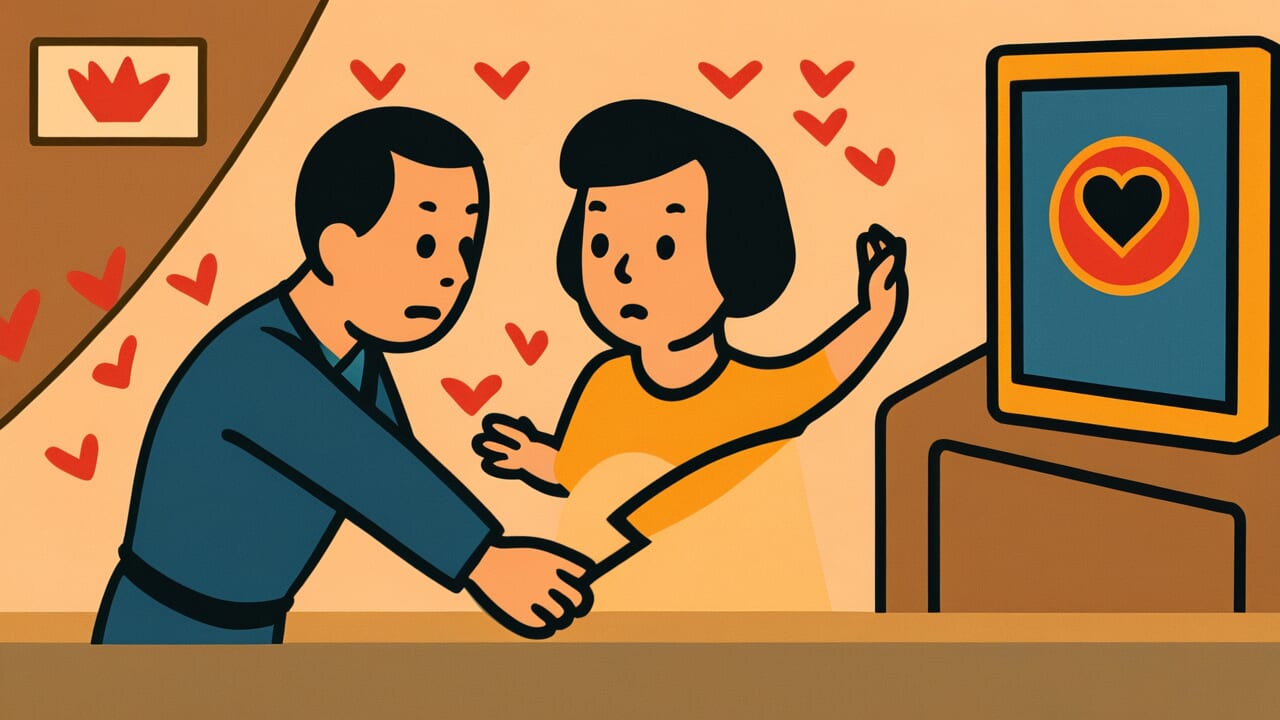How to Read “The enemy of the heart is the heart”
Kokoro no ada wa kokoro
Meaning of “The enemy of the heart is the heart”
“The enemy of the heart is the heart” means that the heart creates enemies, and the heart itself defeats those enemies.
Many of the difficulties and suffering we face are actually created by our own hearts. At the same time, the power to overcome them also lies within our hearts.
For example, emotions like anxiety, fear, and anger are created by the heart. Whether we get swept away by them or calm them down depends entirely on our own hearts.
More than external situations themselves, how we receive them determines the quality of our lives.
This proverb is used when facing difficulties. It shows a positive attitude that we can improve situations by changing our mindset, rather than seeking causes outside ourselves.
Even today, this way of thinking holds great importance in mental health and stress management.
Origin and Etymology
The exact origin of this proverb has several theories, but it’s believed to be strongly influenced by Buddhist thought.
Buddhism teaches “everything is created by the mind alone.” This idea forms the foundation of the proverb.
The word “ada” (enemy) is used today to mean “adversary.” In ancient times, it had broader meanings including “disaster” or “obstacle.”
This proverb expresses a duality: the heart creates disasters, yet the heart also holds the power to overcome them.
Zen Buddhism also has the phrase “there is no truth outside the mind.” The idea that suffering and joy both change depending on your mindset has deeply rooted itself in Japanese spiritual culture.
Similar expressions appear in Edo period moral instruction books. This suggests the teaching was widely understood among common people.
In bushido spiritual training, the importance of controlling one’s heart was repeatedly emphasized. This proverb likely grew from such cultural soil.
Usage Examples
- Feeling nervous during presentations is also “the enemy of the heart is the heart,” so if I calm down, I should be able to show my true abilities
- Relationship troubles ultimately come down to “the enemy of the heart is the heart” – it’s faster to change how you receive things than to try changing others
Universal Wisdom
The truth shown by “the enemy of the heart is the heart” is a deep insight. The source of human suffering and liberation exists in the same place.
We often tend to seek causes of unhappiness in external environments or other people. But actually, our heart’s reactions are the biggest factor creating suffering.
When encountering the same event, one person may be deeply hurt while another remains calm. This is because what’s decisive isn’t the event itself, but how we interpret and feel about it.
Emotions like anger, jealousy, and anxiety don’t come from outside. Our own hearts create them.
However, the true beauty of this proverb lies in showing hope, not despair. If the heart creates enemies, the heart can also defeat them.
This means we already possess the power to free ourselves from suffering.
This teaching has been passed down through generations because it sees through the essential structure of human nature. Changing external factors is difficult, but we can change our own hearts.
This possibility is the greatest freedom given to humans. Our ancestors understood that true strength isn’t the power to defeat external enemies, but the power to control one’s own heart.
When AI Hears This
When trying to solve heart problems, people attempt to change their environment or change others. But from a control engineering perspective, this is “disturbance rejection” – the most inefficient control method.
For example, when keeping a room comfortable with air conditioning, it’s more reliable to monitor internal temperature with sensors and adjust cooling accordingly than to completely block hot wind from windows.
This is the basic principle of feedback control. External factors are infinite, but internal states are measurable and controllable.
Heart problems have the same structure. It’s impossible to remove all external factors causing anxiety.
Even if you change workplaces or reset relationships, new disturbances will inevitably appear. Control theory proves that in systems with infinite disturbances, internal state feedback control is the only stabilization method, not disturbance suppression.
In other words, building an internal loop that observes your heart’s state and adjusts your reactions based on that information is essential for mental stability.
When you feel anger, recognize that emotion and decide how to handle it yourself. This “self-observation and self-adjustment” loop is the most robust system design that engineering teaches.
Lessons for Today
This proverb teaches modern people how to regain control of their lives. SNS comparisons, work pressure, relationship friction – modern society overflows with factors that disturb the heart.
However, whether you get swept away by them or handle them calmly depends on your heart.
Specifically, when emotions arise, develop the habit of observing them as “reactions created by the heart” rather than accepting them as “facts.”
When you feel anger, notice “right now, my heart is creating anger.” In that moment of awareness, you shift from being swallowed by emotions to controlling them.
What’s important is not blaming the heart for creating enemies. That’s a natural human reaction.
Rather, trust the power that heart possesses. A heart that can create anxiety can also create peace. A heart that generates anger can also generate forgiveness.
The answer already exists within you. Before seeking salvation outside, why not face your own heart?
There, the door to true freedom opens.



Comments